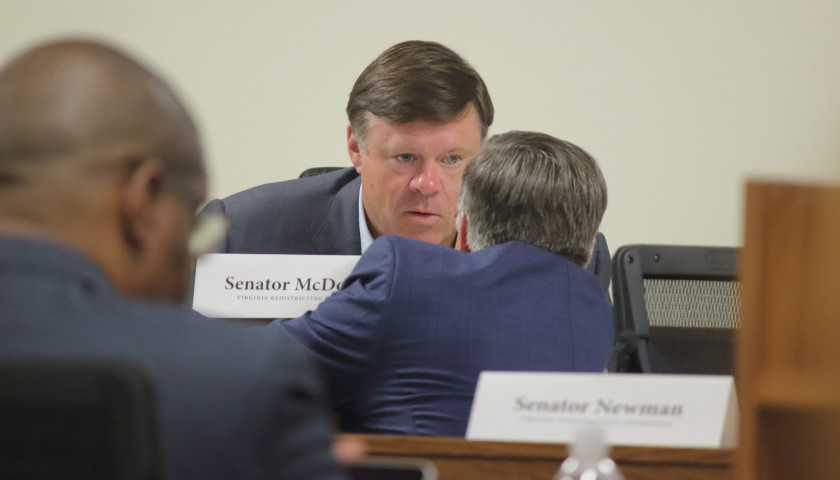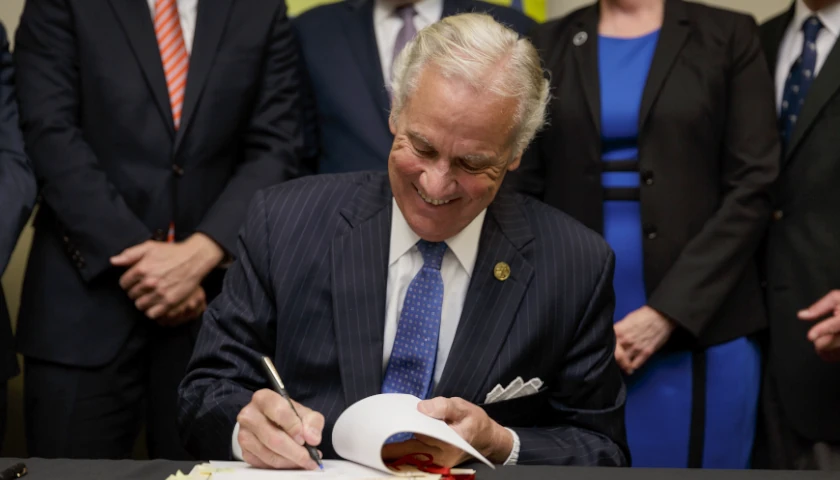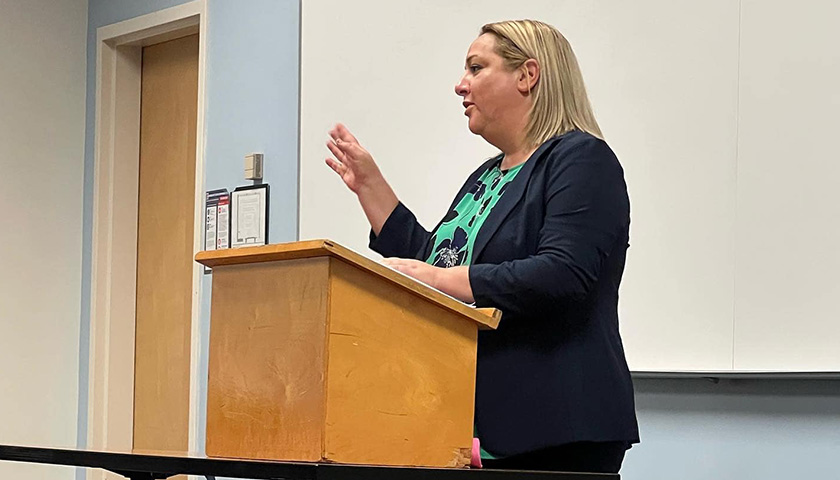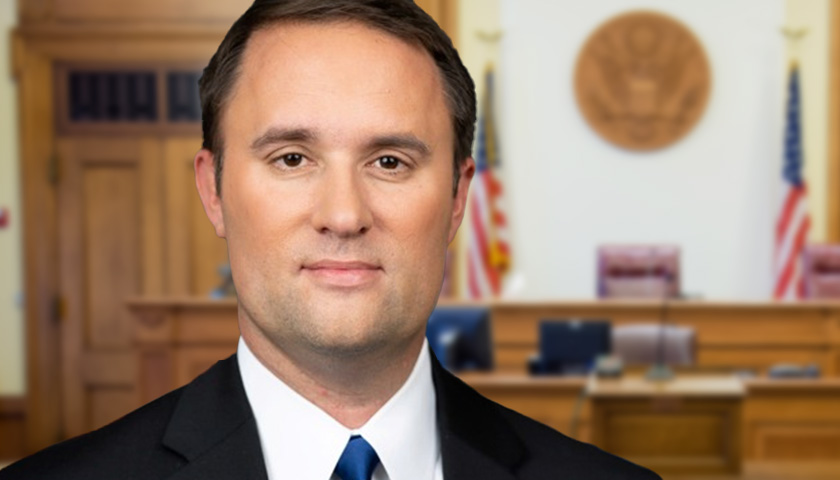With no quorum, the Virginia Redistricting Commission couldn’t take any votes in its Monday meeting, but the commissioners heard legal discussion of the definition of fairness, and heard public comment on a recent draft map of congressional district that combined Republican proposal for southwest Virginia with the Democratic proposal for northern Virginia. One of the commenters was Sam Shirazi — a member of the public who highlighted links between parts of the draft and maps submitted through public comment by former Virginia Congressman Tom Davis (R-VA-11).
After Shirazi’s weekend twitter posts, Delegate Marcus Simon (D-Fairfax) investigated the links between the maps, and discovered that Davis’ maps had been created with the help of Jason Torchinsky, who in 2017 was the National Republican Redistricting Trust (NRRT) Senior Advisor, according to Politico. He works at the same firm as Senator Jill Vogel (R-Fauquier), who is not a commissioner.
Simon accused the Republican map-drawing team of colluding with the NRRT.
“We’ve essentially put out as our C1 [unified map proposal], Jason Torchinsky’s Republican National Trust map for the Commonwealth of Virginia, so it’s no wonder that we had 170-some people comment that they’re not fans of the map,” Simon said. “I’m sure the Republican National Trust was just popping champagne corks when they saw the C1 come out.”
Davis later told VPM that the NRRT helped him manage the technology while he gave them criteria for the maps.
Republican lawyer Brian Tyson said, “An allegation of collusion is very serious allegation, and our side definitely understands our responsibilities not to communicate outside of this context, and we have not done that. In preparation for the meting that was held last week, the co-chairs had specifically requested we look at citizen maps. We looked at a bunch of citizen maps in the process, and then we had specific instructions to have [districts] three and four held steady, to have different parts of the map drawn by different people, one map.”
He said, “We looked at the citizen maps that were there and there’s not a whole lot of ways you can draw southwest Virginia. And if you’re going to split an area, you’re going to split it in the most populous area. The idea that we conspired with the NRRT to come up with this secret map, that’s just patently untrue.”
Simon retracted his accusation but said it would have been better if the process had been publicly disclosed.
The commission has a public hearing on its final version scheduled for Friday, but with different definitions of fairness splitting the commission, consensus on any final version seems unlikely. Virginia code regulating the new districts states, “A map of districts shall not, when considered on a statewide basis, unduly favor or disfavor any political party.”
That wording is new, and has not been tested in court, leaving it unclear what it means. In response to questions last week, the Republican legal team issued a memo discussing fairness, and argued that the draft proposal seemed fair, based on the bipartisan process used to create the proposal, its compliance with the commission’s overarching criteria, and an apparent balance that the memo said provides five safe Democratic districts, five safe Republican districts, and one district that leans Republican or is a swing district.
“To be sure, map C1 may not achieve ‘proportional representation.’ That is, it may not award to the two major political parties a number of congressional districts proportional to their share of the vote in statewide elections. But Virginia Code § 24.2–304.04(8) does not expressly demand proportional representation,” the Republican lawyers wrote.
Democrats argue that the “unduly favor” language in the code means that Virginia’s blue-leaning electorate should be at least partially reflected in the makeup of the maps, i.e., proportional representation.
“As a starting point, we should hopefully all be able to agree that when a majority of the people of Virginia express a preference for a political party, the map should at least reflect a majority of seats for that public will,” Democratic lawyer Kareem Crayton said.
That fundamental disagreement, combined with collapsed trust between the commission’s built-in political factions, puts the commission at risk of missing the first deadline for the final congressional map to be submitted to the General Assembly next Monday, October 25. The commission’s effort to redistrict Virginia’s legislative maps seems all but dead. The commission currently has two remaining meetings scheduled, one on October 20, and one on October 25, with a October 22 public hearing. If it misses the deadline, the commission can use a two-week extension.
– – –
Eric Burk is a reporter at The Virginia Star and The Star News Network. Email tips to [email protected].





